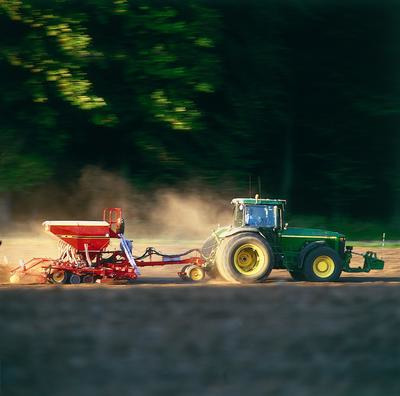Severe dryness at the time of rapeseed sowing is a major issue. To give oilseed rape the best possible start, it is important to act thoughtfully.
The first process after the grain harvest in dry conditions is the shallow tillage to break capillarity. It helps to prevent any remaining moisture from getting lost unused. Shallow cultivation is also a prerequisite for the germination of failure grains and for the emergence of weeds and grass weeds, provided that the soil moisture is permitting this. Important for this process are good reconsolidation when working shallow and a high area output with moderate costs.
The next steps in stubble- and soil cultivation need to be well considered and performed at the right time. Incorrect cultivation must not lead to drying out. Is there still residual moisture in the tillage horizon or just below it? Only the spade can provide clarity. If so, use the residual moisture for immediately sowing after the soil is tilled deeper. Soil cultivation should be done with immediate intensive reconsolidation and immediate subsequent sowing.

If the soil has dried out completely, there is no need to consider water-saving tillage. On the contrary, the soil should be worked to the desired depth a few weeks before the planned sowing date. So the soil can settle a little before sowing, and hopefully the falling rainfall will be better absorbed by the soil. If there is only a small amount of rain until sowing, only the upper part of the soil will be moist. In this case, no more deep mixing is allowed so as not to bring up additional dry soil.
The drier the soil, the more important it is to cultivate it vigorously and to ensure the best possible reconsolidation immediately afterwards.
Do not sow in hot, dry soils, as the seed can develop dormancy there at over 20 °C. If possible, wait for rain and sow later. For vigorous varieties, the sowing window can be extended to the 5th after the optimum sowing time, with a little bit more risk also 10 days after.
Seed placement in the dust
If there is no moisture at all in the entire seed horizon, very shallow seed placement in the dust was successful in autumn 2018, for example. The best field emergence was achieved with sandy soils and shallow placement. On sandy soils, even low precipitation penetrates deeper, as the soil itself hardly holds the water. The heavier the soil, the higher is the water holding capacity.
With low rainfall, the water remains trapped in the upper centimeters and does not reach the seeds. Moreover, dried-out clay soils bind the water so tightly that it is not available to the plants. Despite the better field emergence with shallow placement, however, problems will arose if follow-up rainfall will not arrive in time to keep the plants alive. Withered plants are regularly found where the seedbed was too soggy in dry tillage. For all late sowings under dry conditions, it is advisable to first wait for safe field emergence and good growing conditions before planning herbicide measures.
If the weather remains dry, at least cereal cultivations possible without having to prepare the seedbed again.

